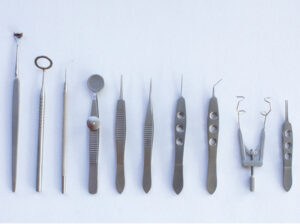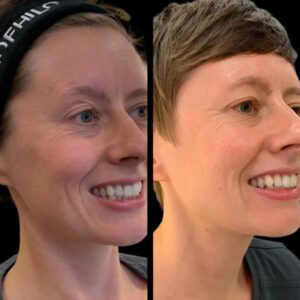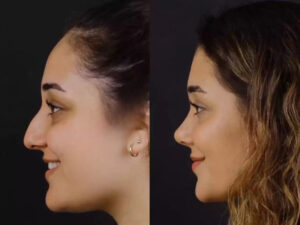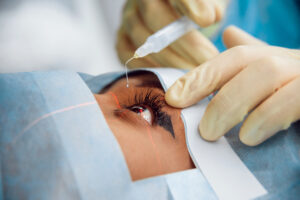Cosmetic surgery has transformed how people enhance their physical appearance, with advanced techniques and tools ensuring precise results. Among the pivotal elements of successful cosmetic procedures are the cosmetic surgery instruments. These specialized tools enable surgeons to perform delicate tasks with accuracy and confidence. Additionally, ENT and plastic surgery instruments complement the tools used in aesthetic and reconstructive surgeries. This article delves into the various instruments, their significance, and their roles in modern surgical practices.
Understanding Cosmetic Surgery Instruments
Cosmetic surgery instruments are specially designed tools used by surgeons to perform procedures aimed at improving physical appearance. These instruments are crafted to allow precision, control, and safety, which are paramount in such procedures.
Categories of Cosmetic Surgery Instruments
- Cutting and Dissecting Instruments
These include scalpels, scissors, and chisels designed to cut through tissue with minimal damage. Their sharpness and ergonomic design ensure precision and reduce trauma to surrounding areas. - Grasping and Holding Instruments
Instruments like forceps and clamps are crucial for holding tissues in place during surgery. These tools allow surgeons to manipulate delicate tissues without causing injury. - Retractors
Retractors help to hold back tissues and organs, providing surgeons with better visibility and access to the operative site. They are indispensable for procedures requiring precision in confined spaces. - Suction Devices
Removing excess fluids and maintaining a clear operative field are critical. Suction instruments play a vital role in maintaining hygiene and visibility during surgery.
Role of ENT Instruments in Cosmetic Surgeries
ENT instruments, primarily used for ear, nose, and throat procedures, overlap significantly with cosmetic surgery tools. Many cosmetic procedures involve the face and neck, making ENT instruments indispensable in aesthetic surgeries.
Common ENT Instruments in Cosmetic Surgery
- Rhinoplasty Tools
Nose reshaping, a popular cosmetic procedure, relies heavily on ENT instruments like osteotomes and nasal speculums to adjust bone and cartilage structures. - Otoscope and Speculum
These tools assist in examining the ears and nasal passages, ensuring no underlying issues compromise the surgical outcome. - Microsurgical Instruments
ENT surgeons often use delicate microsurgical instruments for precise work on facial tissues during reconstructive or aesthetic procedures.
Plastic Surgery Instruments and Their Impact
Plastic surgery instruments focus on reconstructive and cosmetic enhancements. They are designed to handle both soft and hard tissues with the utmost care.
Essential Plastic Surgery Instruments
- Dermatomes
Used for skin grafting, dermatomes are essential in reconstructive surgeries, especially in treating burns or scars. - Canulas
Liposuction procedures heavily depend on cannulas to remove unwanted fat deposits, aiding body contouring and reshaping. - Needle Holders and Suturing Tools
Fine sutures are a hallmark of plastic surgery, ensuring minimal scarring. Needle holders and suturing tools enable surgeons to perform precise stitching. - Laser Devices
Advanced plastic surgery often includes lasers for non-invasive procedures, scar revision, and resurfacing skin.
The Evolution of Surgical Instruments in Cosmetic and Plastic Surgery
The design and functionality of cosmetic surgery instruments have significantly evolved over the years. Innovations in materials and ergonomics have enhanced their effectiveness and safety.
Materials and Durability
- Stainless Steel: Known for its strength and resistance to corrosion, stainless steel remains the material of choice for most surgical instruments.
- Titanium: Lightweight and biocompatible, titanium instruments are ideal for intricate procedures.
- Disposable Instruments: Single-use tools ensure sterility and reduce the risk of infection.
Technological Integration
Modern surgeries benefit from tools integrated with advanced technology. Instruments like robotic arms and endoscopic tools provide unmatched precision, making procedures safer and more efficient.

Maintenance and Sterilization of Surgical Instruments
The effectiveness of cosmetic surgery instruments depends on their proper maintenance and sterilization. Ensuring that tools are pristine condition reduces the risk of complications during surgery.
Key Steps in Maintenance
- Cleaning: After each use, instruments must be thoroughly cleaned to remove biological material.
- Sterilization: Autoclaving, chemical sterilization, or UV treatment ensures the elimination of pathogens.
- Inspection: Regular inspection for wear and tear prevents potential issues during surgery.
Importance of Proper Handling
Improper handling can compromise the integrity of the instruments, affecting their performance. Surgeons and support staff must be trained to handle and store instruments correctly.
check the latest details about the Hand Surgery Instruments Set
Choosing the Right Instruments for Successful Surgeries
Selecting appropriate tools is critical for achieving the desired outcomes in cosmetic and plastic surgeries. High-quality cosmetic surgery instruments, combined with the expertise of skilled surgeons, ensure patient satisfaction and safety.
Factors to Consider When Selecting Instruments
- Purpose: The specific requirements of the procedure dictate the choice of tools.
- Ergonomics: Comfortable handles and lightweight designs reduce fatigue during long surgeries.
- Manufacturer Reputation: Opting for instruments from reputable manufacturers ensures quality and reliability.
Collaboration with Medical Suppliers
Surgeons often collaborate with specialized medical suppliers to access the latest innovations in surgical instruments. These partnerships enable the adoption of cutting-edge tools and techniques.
FAQs
How are cosmetic surgery instruments different from general surgical tools?
Cosmetic surgery instruments are designed for precision and minimal tissue damage, tailored to aesthetic and reconstructive needs.
Can ENT instruments be used in cosmetic surgeries?
ENT instruments are frequently used in facial cosmetic surgeries, especially procedures like rhinoplasty and neck lifts.
What role do plastic surgery instruments play in body contouring?
Plastic surgery instruments like liposuction cannulas and body sculpting tools are vital for reshaping and removing excess fat.
How often should surgical instruments be sterilized?
Surgical instruments must be sterilized after every use to prevent infections and ensure patient safety.
What advancements are shaping the future of surgical instruments?
Robotic-assisted tools, AI integration, and improved materials like titanium revolutionise surgical instruments.
Why is proper maintenance of surgical instruments essential?
Proper maintenance ensures surgical tools’ longevity, performance, and safety, reducing risks during procedures.
Cosmetic surgery continues to thrive as a field driven by advancements in techniques and instruments. From precise cosmetic surgery instruments to versatile ENT and innovative plastic surgery instruments, these tools empower surgeons to deliver life-changing results. By prioritizing the quality and maintenance of these instruments, the industry can uphold the highest standards of care, ensuring a brighter future for patients seeking aesthetic transformations.






